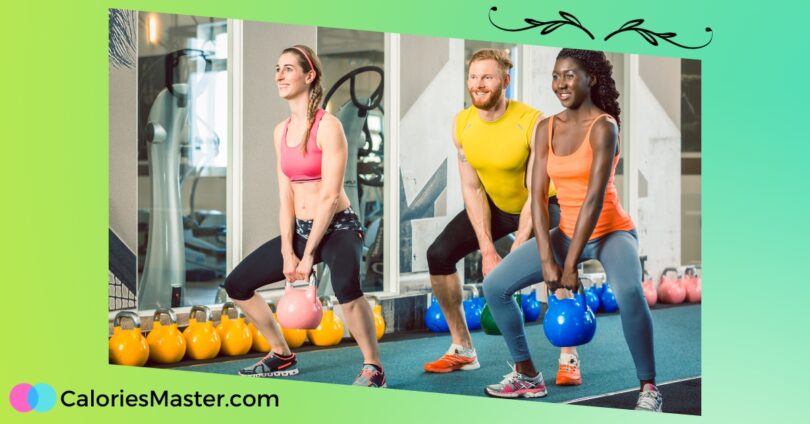Functional training has become an increasingly popular approach to fitness and exercise, with a focus on improving the overall strength, coordination, and balance of the body.
This type of training is designed to help individuals perform everyday tasks with ease and efficiency, as the exercises are centred around mimicking common movements required in daily life. Incorporating functional training into one’s workout regime can enhance the body’s ability to move optimally and reduce the risk of injury during routine activities.
At the core of functional training is the idea that we should strive to work our bodies in a way that’s both natural and efficient.
By combining exercises that mimic real-world scenarios with more traditional gym exercises, individuals can develop a better sense of coordination and body awareness. This not only helps to build physical strength but also contributes to improved mental focus during workouts and everyday activities.
Functional training classes and gym equipment are readily available to suit various levels of fitness and ability. From simple bodyweight exercises to more complex movements using resistance bands, dumbbells, or kettlebells, there is something for everyone.
As you begin incorporating these exercises into your workout routine, you’ll likely find yourself feeling more confident and empowered in your everyday life.
Understanding Functional Training
Functional training is a type of exercise that aims to improve fitness, strength, and overall movement patterns required for performing daily life activities.
By focusing on core, balance and whole-body movements, functional training provides a well-rounded workout that can benefit individuals at different fitness levels.
Benefits of Functional Training
- Whole body workout: Functional training involves multiple muscle groups and joints, resulting in a more comprehensive and effective workout.
- Improved stability and coordination: These workouts target core and stabilizing muscles, which in turn enhances balance and overall body coordination.
- Better daily life performance: By simulating everyday movements in training routines, functional exercises facilitate improved performance in routine tasks.
- Reduced risk of injury: By addressing muscle imbalances and promoting proper movement patterns, functional training can decrease the likelihood of injuries.
- Versatility and adaptability: These workouts can be easily tailored to cater to individual needs and fitness levels, making them an appealing choice for many.
Functional Training Vs Other Workouts
| Functional Training | Other Workouts |
|---|---|
| Targets whole body | May focus on isolated muscle groups |
| Emphasizes core and balance | Can neglect core and stability aspects |
| Mimics real-life movements | May not replicate daily life tasks |
| Can be adapted for fitness levels and individual goals | May require a specific fitness level or skillset |
| Aims to prevent injuries and improve daily life performance | Can focus solely on aesthetic goals |
In summary, functional training offers a unique approach to exercise, focusing on improving strength, stability, and movement patterns that are essential for performing everyday tasks. While other workouts can still offer benefits, functional training’s emphasis on whole-body movements and adaptability makes it an appealing choice for those looking for a versatile, effective exercise regimen.
Key Elements of Functional Training
Functional training involves a variety of exercises designed to enhance daily life activities by focusing on improving strength, balance, mobility, agility, endurance, stability, power, speed, flexibility, core strength, and muscular endurance.
Incorporating these key elements in a training programme can help achieve optimal performance while reducing the risk of injury.
Strength and endurance are essential components of functional training as they allow individuals to perform daily tasks with ease.
Developing strength involves focusing on exercises that target major muscle groups, such as squats and lunges. To improve muscular endurance, performing high repetitions of these exercises with a lighter resistance is essential.
Balance and stability are important for maintaining proper body alignment and control during movement. Exercises that target balance could include single-leg stands, while stability practices may involve the use of resistance bands, balls, or Pilates techniques.
Mobility and flexibility help individuals move through their range of motion smoothly and efficiently. Enhancing these attributes involves dynamic stretching, yoga, and focusing on exercises targeting various joints in the body. Moving the joints helps maintain connective tissue health and reduces the risk of injury.
Agility and speed are crucial in functional training as they enable people to perform tasks more efficiently. Incorporating exercises such as agility ladders, plyometric drills, and interval training can improve these attributes, allowing individuals to change direction and accelerate quickly.
Power is the ability to generate force rapidly, which is essential for activities such as lifting heavy objects or sprinting. Exercises like kettlebell swings and box jumps train the body to produce power effectively.
Finally, core strength is vital for maintaining a strong and stable foundation during various movements. Planks, leg raises, and bird-dog exercises can help develop a solid core, providing support to the entire body.
By including these key elements in a functional training programme, individuals can enhance their overall physical performance and improve their ability to perform daily tasks with ease.
Popular Functional Training Exercises
Functional training exercises help improve your daily activities by mimicking common movements and enhancing overall strength, flexibility, and balance. Let’s take a look at some popular functional training exercises, split into bodyweight exercises and equipment-based exercises.
Body Weight Exercises
Squats:
Squats are an essential compound exercise that strengthens the entire lower body, including the thighs, glutes and calves. To perform a squat, stand with your feet shoulder-width apart, lower your hips back and down, and then push back up to a standing position while maintaining proper knee alignment.
Lunges:
Lunges target your quadriceps, hamstrings, and glutes. From a standing position, take a big step forward with one foot, and bend both knees to 90 degrees. Push back up and repeat on the other leg.
Plank:
The plank is a core exercise that strengthens your abs, back and shoulders. Position your body in a straight line from head to toe, resting on your forearms and toes. Maintain this position while keeping your core engaged and spine aligned.
Pulling motion:
A fundamental bodyweight pulling exercise is the pull-up. Find a sturdy horizontal bar, grasp it with an overhand or underhand grip, and pull your body up until your chin is above the bar level. This motion primarily targets the back, biceps, and forearm muscles.
Equipment Based Exercises
Deadlift:
Using a barbell or free weights, bend at the hips and knees, grasp the weight, and then stand up straight while engaging your core, glutes, and back muscles.
Bicep curl:
With a pair of dumbbells, stand tall and curl the weights from the side of your thighs to your shoulders, keeping your elbows close to your body.
Reverse lunge:
Holding dumbbells in each hand, perform lunges by stepping backwards with one foot, bending both knees and lowering yourself towards the ground.
Kettlebells and Resistance Bands
Kettlebells are versatile pieces of equipment that can be used for various functional training exercises, such as:
- Kettlebell swings: Perform a hip hinge motion while swinging the kettlebell from between your legs to eye level, targeting your glutes, hamstrings, and core.
- Kettlebell goblet squat: Hold the kettlebell close to your chest while squatting to enhance lower body and core strength.
Resistance bands are a useful tool for functional training exercises:
- Band pull-apart: Holding a resistance band with both hands, extend your arms forward at chest level, and then pull the band apart by moving your hands away from each other, targeting your upper back and rear shoulder muscles.
- Banded push-ups: Wrap a resistance band around your upper back and grip both ends in your hands while performing push-ups, increasing the challenge for your chest and triceps muscles.
By incorporating these functional training exercises into your workout routine, you can effectively enhance your performance and efficiency in daily activities while building strength and stability.
Designing a Functional Training Program
When creating a functional training program, it’s essential to establish your specific goals and consider your experience level. Start by identifying the key components you want to focus on, such as endurance, strength training, mobility, or a combination of these elements.
Developing a well-rounded program requires incorporating a variety of exercises to target a wide range of motion, ensuring that both athletes and fitness enthusiasts can improve their performance.
A strength coach can provide valuable guidance in selecting suitable exercises, tailored to your needs and experience.
In a functional training program, it is essential to focus on:
- Endurance training: Incorporate exercises such as running, cycling, or swimming to improve cardiovascular capacity.
- Strength training: Utilise bodyweight exercises like push-ups, squats, and lunges, as well as resistance training with equipment like kettlebells and dumbbells to build muscle.
- Mobility: Include dynamic stretching and mobility drills to increase your range of motion and prevent potential injuries.
Functional training programs should be adaptable, allowing for progressions and modifications based on your fitness goals and abilities. Here is a sample outline of a functional training program to get you started:
- Warm-up: Engage in 5-10 minutes of light aerobic activity to increase blood flow and prepare the body for the workout.
- Mobility: Spend 5-10 minutes on dynamic stretching and mobility exercises, focusing on the joints and muscles most relevant to your objectives.
- Workout: This should last between 30-45 minutes, with a mix of endurance, strength, and mobility exercises. Be sure to allow adequate rest between sets and exercises, depending on your experience and fitness levels.
- Cool-down: Spend 5-10 minutes performing static stretches and relaxation techniques to aid recovery.
Remember that consistency is key to effectively reaching your goals. Dedicate time each week to your functional training program, incorporating any necessary changes or adjustments as your experience and performance improves.
If you’re not an experienced athlete or strength coach, consulting with an expert or using APIs can be useful for tracking and evaluating your progress.
Role of Functional Training in Sports Performance
Functional training focuses on improving an athlete’s movements and muscle activation patterns directly related to their chosen sport. This promotes increased power, athletic performance, speed, agility, coordination, and endurance. Let’s dive into the role of functional training in football and basketball.
Football
In football, functional training plays a key role in enhancing a player’s ability to perform multidirectional movements, explosive sprints, and sudden changes of direction. These training methods target key muscles, such as:
- Quadriceps
- Hamstrings
- Glutes
- Calves
- Core
Some of the functional exercises used in football include:
- Plyometric training: Enhances jump height, improves reaction time, and increases power.
- Kettlebell swings: Develops hip and core strength, which are essential for rapid acceleration and deceleration.
Implementing these exercises can help football players improve their overall athleticism and reduce the risk of injury by strengthening key muscles and improving joint mobility.
Basketball
In basketball, functional training aims to improve vertical jumping, lateral quickness, and long-term endurance. Special emphasis is placed on targeting the following muscles:
- Calves
- Quadriceps
- Hamstrings
- Hip flexors
- Core
Some examples of basketball-specific functional exercises include:
- Box jumps: Improves lower body explosiveness, increasing vertical jump ability.
- Lateral slides: Builds lateral speed, and agility, and improves defensive stance.
Incorporating these exercises into a basketball training programme helps players become more efficient in their movements, leading to better on-court performance. By focusing on muscle groups and movement patterns specific to the sport, functional training can enhance an athlete’s overall performance and reduce the risk of injury.
Importance of Functional Training in Everyday Activities
Functional training focuses on enhancing our body’s ability to perform daily life activities efficiently. It involves exercises that strengthen movement patterns, coordination, and balance, enabling us to carry out everyday activities with ease.
Incorporating functional training into our routines not only keeps our bodies in optimal condition but also improves the quality of daily life. Engaging our muscles in a coordinated manner allows us to perform tasks such as lifting, bending, and reaching with less strain and discomfort.
For instance, when we pick up a heavy object from the floor, functional training teaches our body to utilise its core strength for stabilisation.
This reduces the risk of injury and ensures a proper lifting technique. Likewise, riding a bike requires good balance and coordination—skills that are developed through functional training exercises.
Moreover, functional training benefits individuals of all ages and fitness levels by targeting specific muscles and movements that are crucial for everyday activities. This holistic approach addresses muscle imbalances while improving mobility, flexibility, and overall physical performance.
In summary, functional training is essential for enhancing our daily life experiences, providing us with the required strength, coordination, and balance to perform everyday activities effectively and safely.
By integrating functional training exercises into our fitness routines, we can maintain a healthy, active lifestyle and reduce the risk of injuries.
Risk and Precautions in Functional Training
Functional training enhances overall fitness and daily life activities but it’s essential to be aware of the risks and take necessary precautions.
Injury prevention is a major concern during functional training, especially when you’re targeting several muscle groups. Pay close attention to the range of motion you’re performing, keeping joints and muscles in mind.
Training with tight or weak muscles can hinder flexibility and movement, increasing the risk of injury. Consult with health professionals, such as physiotherapists or personal trainers, to ensure proper technique and form.
Experiencing pain while executing functional exercises should not be ignored, as it can be an indication of incorrect movement or misalignment.
Alternating muscle groups during workouts can allow for adequate recovery time and decrease the likelihood of injury, enabling the body to maintain its natural curve and avoid straining the spine.
To maximise safety and effectiveness, follow these guidelines:
- Warm-up: Begin your training session with dynamic stretching exercises to increase blood flow and prepare your muscles.
- Proper technique: Ensure you know and understand the correct form for every exercise, focusing on quality rather than quantity.
- Stay balanced: Strengthening both sides of your body evenly will contribute to better stability and overall function.
- Progress gradually: Start with lower intensity and gradually increase the challenge as your ability and confidence improve.
- Know your limits: Be mindful of your body’s capabilities and avoid attempting exercises that could cause strain or discomfort.
Functional training can yield incredible results when approached with vigilance and preparation. By considering these points, you will promote a safer and more efficient training experience.
Functional Training for Specific Groups
Functional training is an effective approach catering to various groups with different goals, such as bodybuilders, individuals aiming for weight loss, and those focused on enhancing their body composition or muscular strength.
Here, we present an overview of how functional training can be utilised for various goals.
Bodybuilders and Hypertrophy:
Bodybuilding often focuses on hypertrophy – the increase in muscle size. While bodybuilders may rely on targeted isolation exercises, incorporating functional training into their fitness program can yield impressive results as well.
Full-body exercises and multi-joint movements prompt multiple muscles to work together, stimulating growth and improving overall functionality.
Weight Loss:
Functional training offers full-body workouts that maximise calorie expenditure and promote weight loss. These workouts consist of dynamic movements that activate multiple muscle groups, thereby increasing metabolism and burning calories more efficiently than traditional exercise routines. Engaging in functional training also helps build lean muscle tissue, essential for maintaining a healthy weight in the long run.
Muscular Strength and Body Composition:
Functional training enables individuals to improve their body composition and muscular strength by activating various muscle groups during each exercise.
This approach ensures full-body muscle engagement, ultimately leading to a more balanced and well-rounded physique. Additionally, functional training helps increase muscular endurance, allowing individuals to perform daily activities with greater ease and efficiency.
In summary, functional training caters to diverse fitness goals, from bodybuilding and weight loss to enhancing body composition and muscular strength. Incorporating multi-joint, full-body exercises into one’s fitness program allows for improved overall functionality and a well-rounded approach to physical fitness.
Evolution and Future of Functional Training
Functional training has been developing steadily in the fitness world, becoming more than just a buzzword in recent years. With an emphasis on improving physical performance, functional training workouts have gained traction, primarily due to their practicality in everyday life and sports.
One of the key aspects of functional training is its adaptability to various disciplines and athletic programs. The surge in popularity of high-intensity interval training (HIIT) programmes is an indicator of this trend.
Incorporating functional training into HIIT regimens has yielded impressive results, demonstrating the effectiveness of this approach in enhancing strength, flexibility, and endurance.
In the future of functional training, the focus will likely shift even more towards personalisation and specificity. As people realise the importance of tailoring their workouts to accommodate individual needs and goals, bespoke functional training plans will become increasingly popular.
These customised workouts will enable trainees to isolate and target specific muscle groups or movement patterns, further enhancing the utility and efficacy of functional training workouts.
The integration of technology with functional training may also provide innovative solutions for trainers, athletes, and fitness enthusiasts alike.
New tools and software are likely to emerge, offering comprehensive data analysis and personalised feedback on exercise performance. This advancement will enable more precise adjustments and improvements in functional training, resulting in greater progress and overall effectiveness.
In summary, the evolution of functional training is set to continue influencing the fitness industry with its adaptable, personalised, and technology-driven approach.
As the understanding of functional training principles deepens, its applications will expand, leading to even more significant developments and innovations in the realm of physical fitness and performance.









